
How to Make Direct Mail Coupons for Your Restaurant
One of the main reasons restaurants fail to generate a response to their direct mail campaigns is because their coupons aren’t enticing enough.
Coupons can directly influence a customer’s decision on where to eat out and are often the catalyst that leads to a first-time visit. In fact, a 2018 study reports that 30% of people will try a new fast food or casual dining restaurant when mailed coupons, and over 25% said they’d try a new fast casual restaurant or pizzeria with a coupon.
It’s also important to understand that coupons appeal to just about everyone, not just those with lower incomes. In fact, wealthy people, college-educated people, and members of just about every generation on Earth love using coupons.
But if coupons are so important, why do some restaurants struggle to create good ones? The goal of this guide is to teach you how to make coupons that boost your response rates and bring in more customers. We included restaurant coupon ideas and examples below to make it easier for you to incorporate them into your marketing. Follow our advice, and you’ll be able to cash in on the large number of diners looking for a deal. Let’s get started.
Do Your Homework
Before you can start planning out the coupons for your next campaign, you need to lay the groundwork for a successful strategy.
Identify Your Target Audience
You can’t offer a great deal unless you know who you’re offering it to. Use what you already know about your current customer base and do some demographic research on your surrounding area. You may find an untapped market hidden in plain sight.
Look for information like the number of households with children, income levels, age, and gender to craft more strategic offers. For example, you may find that there are far more families in your area than single people, so it may be in your best interest to create family-friendly offers like free kids meals or family size bundles.
While you can pay a market research company to do a full market analysis for you, there are also plenty of free resources for doing some light demographic research on your own. Here are a few sites we recommend using:
- Movoto – While primarily used as a real estate listing website, Movoto’s demographics database is one of the easiest to use and provides all kinds of relevant data at the local level. Simply filter by your state and the zip codes you operate in for tons of useful data.
- US Census Bureau’s American Fact Finder – The US Census Bureau provides a wide array of demographic data from the latest census in 2010. You can access reports and statistics at the national, state, county, and local levels.
Just remember not to get hung up on the details. You should use your demographic data as a guide, but don’t overthink it.
Determine Your Discount Threshold
Coming up with discounts off the top of your head is a great way to go bankrupt. Many restaurants determine their coupon discounts by thinking of what will be most appealing to the customer, or what their rivals are offering, without considering their bottom line.
Before you start offering discounts that eat into your profits, sit down and figure out your gross profit margins on your menu items. Here’s a simple equation you can use:
For example, if you’re selling a large pizza for $14 and it costs you $4 to make, then your gross profit per pie is $10, or 71%.
With a profit margin that high, you could safely give a 25% – 50% discount on a large pizza and still make 21% – 46% profit on it.
This equation doesn’t account for fluctuations in ingredient prices or overhead costs, so you’ll need to reevaluate your costs for more accurate margins regularly. However, it should give you a good idea of how much discount is safe to offer.
With this information in mind, now it’s time to spy on the competition. If you can beat their discounts on similar items, you should, but not at the risk of losing money on each sale.
Review Past Successes
Don’t fix what isn’t broken. If you’ve sent coupons via direct mail or other marketing channels in the past, then you probably have a good idea of what’s worked and what hasn’t. Leverage that knowledge to create a compelling offer, but don’t be afraid to try something new.
Just remember to continually track and compare the redemption rates for your coupons after every campaign. Without this data, you won’t be able to gauge your success or pinpoint areas for improvement accurately.
Look at Your Busiest and Slowest Times
Although most restaurant owners know their slow times by heart, it never hurts to take a second look. Review your sales records and look for any regular periods of the day, week, month, or year when sales tend to dip and create coupons to drive sales during those times. On the other hand, if your business is slammed during a particular period, avoid creating coupons that will drive more business during those times unless you’re sure you can handle the extra volume.
Diversify the Types of Coupons You Use
The single most effective way to improve your direct mail coupons is to simply mix it up. Offering only one type of coupon narrows your audience and decreases redemption rates significantly. Instead, use a mix of bundle deals, free offers, and generic discounts to appeal to all kinds of buyers. Below are some restaurant coupon examples you can use for inspiration.
Bundle Deals
A bundle deal is where you provide a discount for purchasing two or more complementary items at the same time. Bundle deals are most successful when the customer can clearly see the benefit of buying that group of items together.
Use bundle deals to attract groups of people or families looking for a discount on multiple items. You can also create bundle deals to sell lower-ticket items, like a lunch special where you throw in a bag of chips and a drink for a discount.
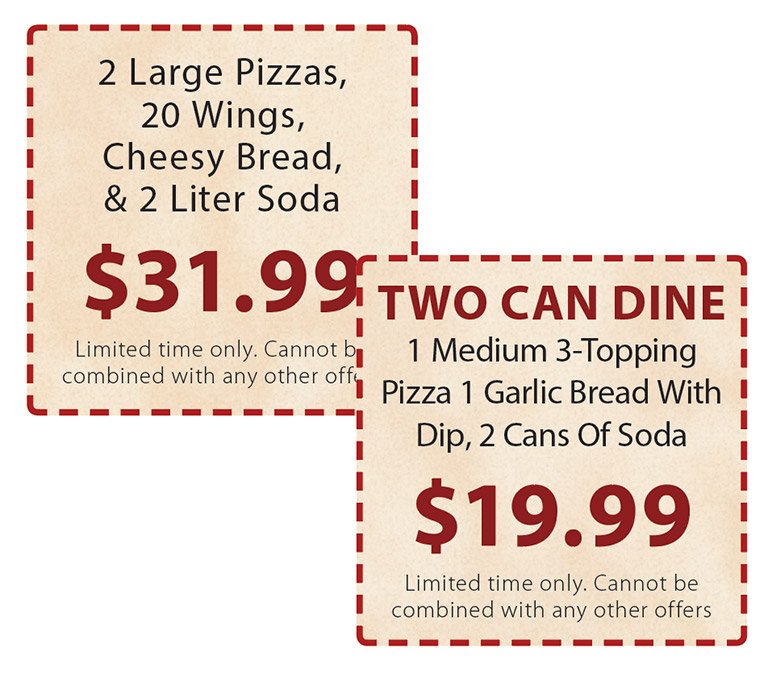
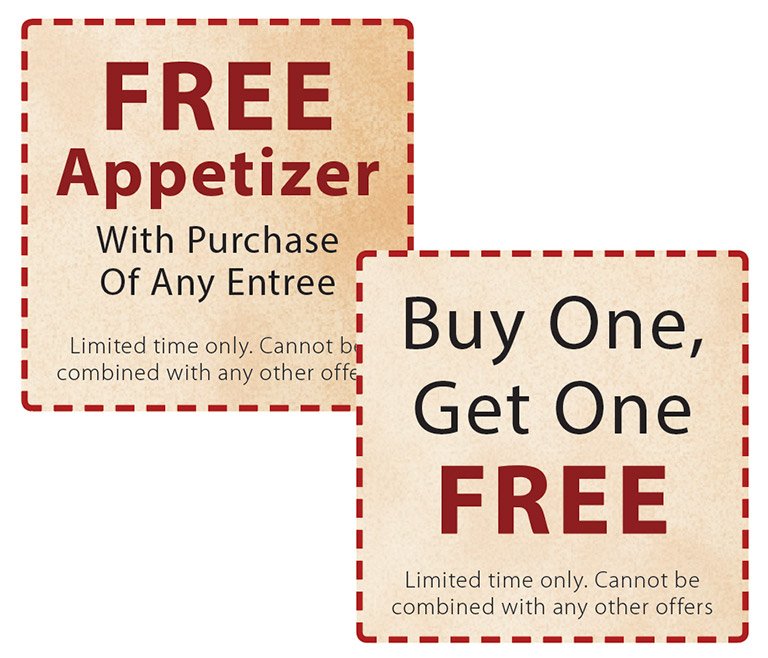
Free Offers
Free offers most commonly appear as “buy one, get one free” deals or as a freebie given away with the purchase of a more expensive item, like a free drink with the purchase of a sandwich. In fact, 57% of diners said BOGO offers influence whether they come back to a restaurant, and 50% will try a new restaurant if they receive a coupon offering a free item with purchase.
Free offers work well regardless of demographics or geographic location. Giving away an item with a low food cost can also save you money compared to offering a discount on a more expensive item. This results in a higher perceived value from the customer’s perspective.
Generic Coupons
Generic discounts typically come in two varieties – dollars off and percentage off – and can be applied to both specific items or the entire bill.
Item-Specific Discounts
Offering a discount on specific items is a good way to control the cost of your promotions, since you can choose products with high profit margins. You can also use item-specific coupons to drive sales of new menu items or to use up excess inventory.
Just remember, consumers don’t like doing the math. If you’re going to take a percentage off a particular item, that’s fine, but make sure you show them what they’ll pay below the giant “25% OFF” headline.
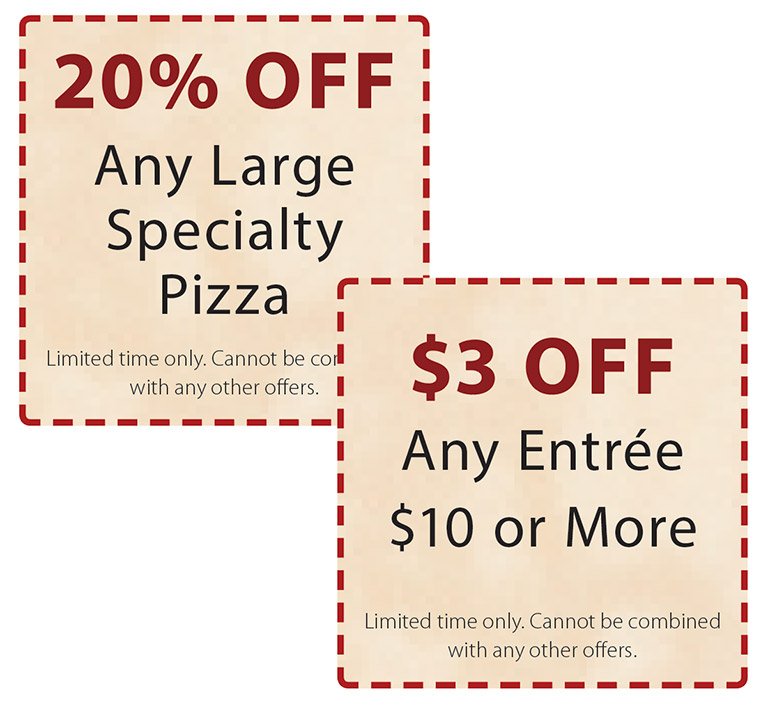
Total Bill Discounts
Discount offers that apply to the total bill are great since they appeal to anyone and allow customers to choose the items they want, instead of things you want them to buy. However, it’s usually a good idea to include an order minimum to avoid breaking even or taking a loss on the sale.
You can even combine two offers in one coupon to encourage a larger purchase. For example, a coupon offering $3 off $20 or $5 off $25 may just persuade the customer to purchase more to receive an extra $2 savings. They’ll feel like they saved more, and you made an extra $3 on their order.
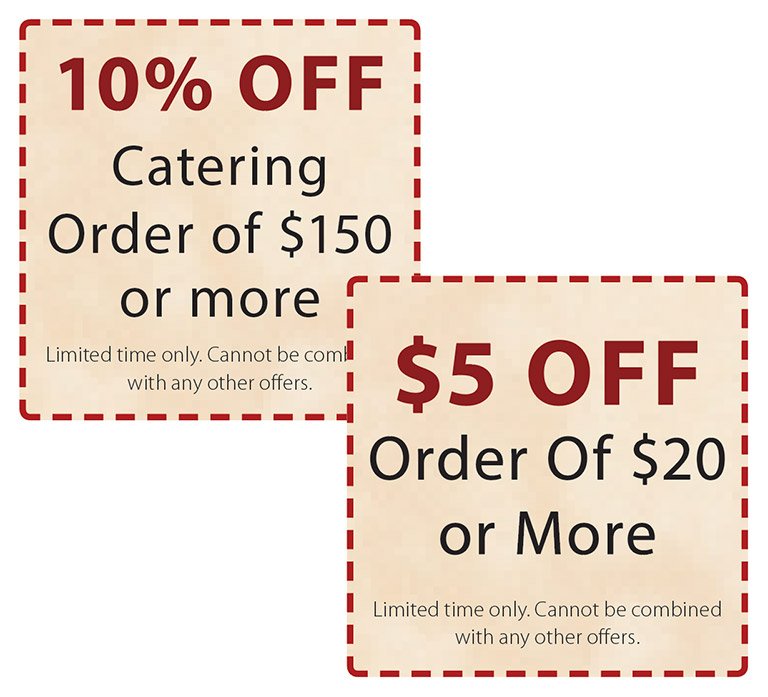
10 Tips to Improve Coupon Redemptions
Executing the diversification strategy above will improve your coupon selection significantly, but it never hurts to do some more fine-tuning. Try out some of these restaurant coupon ideas to make your offers even more irresistible.
1. Upsell
Direct mail doesn’t come with its own server, so it’s important to let the piece do the upselling for you. One of the best ways to upsell on a direct mail piece is to add a suggested item to the coupon, like “Add Breadsticks Only $1.99.”
It’’s up to you whether or not you want to discount the recommended item, but you should suggest foods with high profit margins. And just as you would with a bundle deal, you’ll want to make sure you’re pairing complementary items when upselling. This will increase the likelihood of a sale.
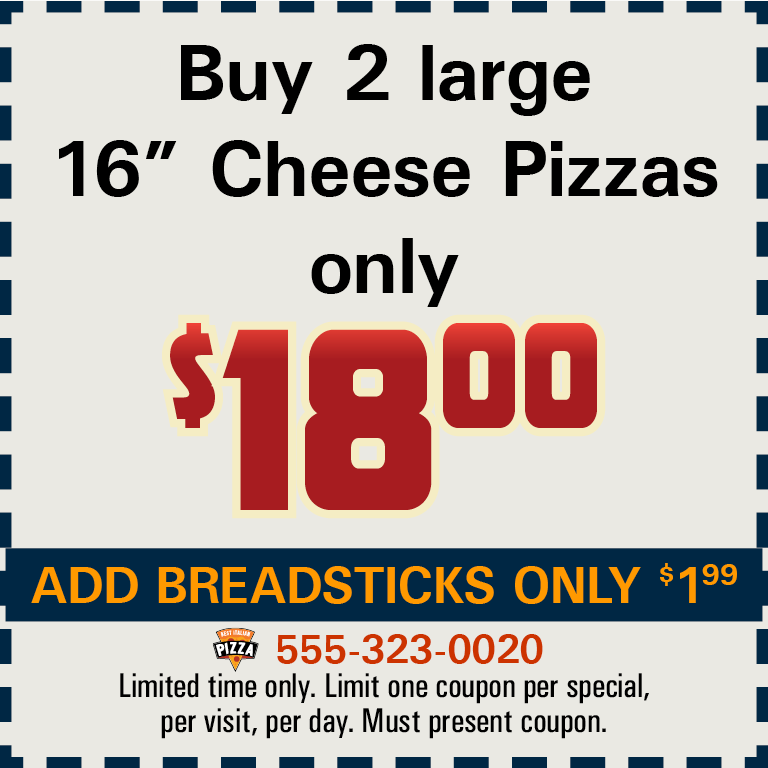
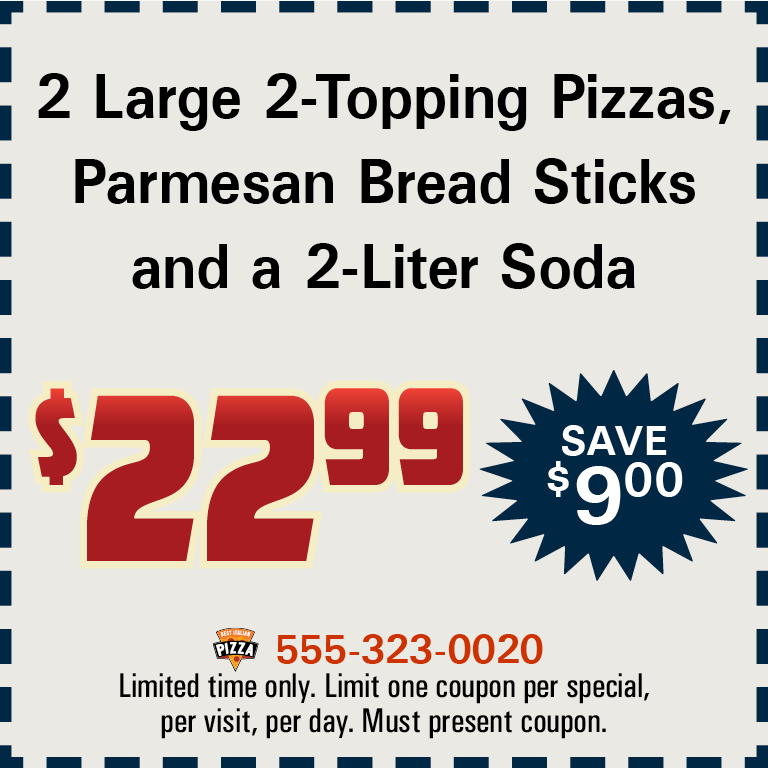
2. Be Transparent About Savings
You may be offering the best deals in town, but without being able to see the original cost of the item, how will anyone know? Make it clear just how much customers will save by highlighting the true value of the offer. Add a burst or banner to spell out exactly how much money they will save over the original price. Just be careful, if your offer isn’t truly aggressive, you don’t want to advertise it.
3. Highlight Special Offers
One common design mistake you can avoid is making all of the coupons look the same. Take your best, most aggressive offer and make it stand out clearly from the rest.
Try some of the following tricks to highlight your best offers:
- Use a different background color
- Make it larger than the other coupons
- Add a distinctive border around the coupon
- Use high-resolution images
- Use text to make it clear that this is your best deal
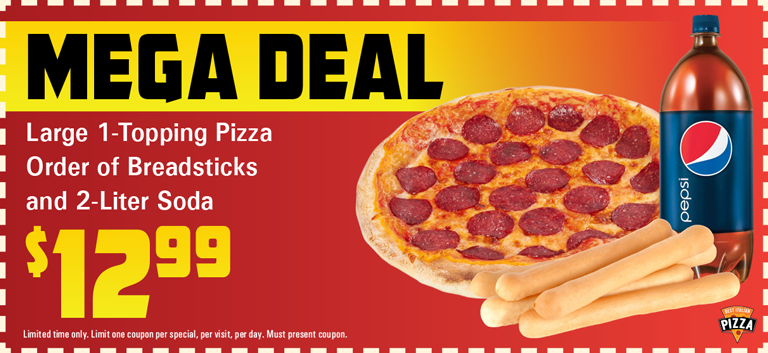

4. Make It Dine-in Only
If you’re trying to fill the seats in your dining room, create coupons for dine-in customers only. Remember to offer a more aggressive discount on dine-in only coupons to get customers in the door. You can make up for the larger discount by having your servers upsell appetizers and drinks.
5. Don’t Forget the Kids
Offering a free kids meal with the purchase of another entree is a great way to incentivize families to choose your restaurant. Most kids meals retail in the $5 to $7 range. At an assumed food cost of 30%, these meals are only costing you $1.50 to $2.10. Of course, this equation doesn’t include all of your overhead costs, but you can see the value in sacrificing $1 or $2 to gain the larger orders from the parents.
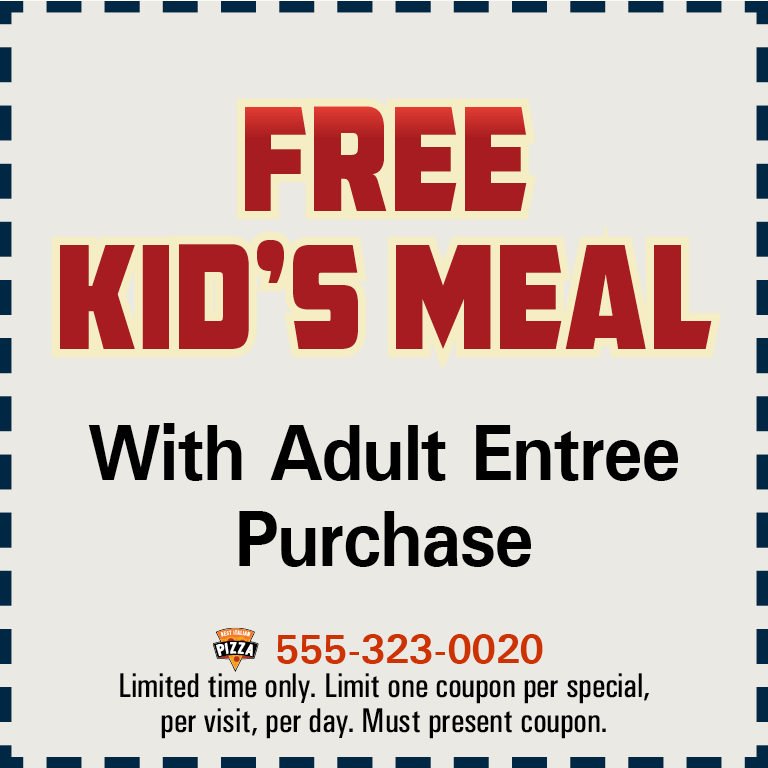
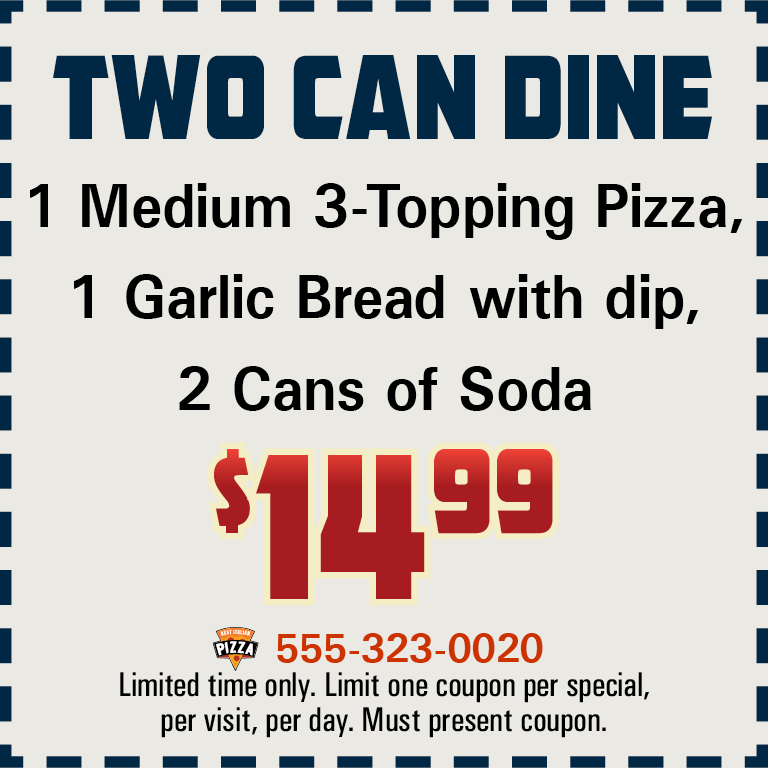
6. …Forget the Kids
Just as it’s important to consider people with children, it’s equally important to think about those without them. If you’re in an area with a low percentage of children, then you’ll need to focus on coupons that appeal to single people, couples, or groups of friends. That means less large bundle deals and more small bundle deals like “two dine for the price of one”.
7. Include Online-Only Offers
If you offer online ordering, consider creating a special online-only coupon that will drive people to your website. Those who buy online tend to have larger average check sizes, reduced order errors, and they give you the ability to capture personal data for future marketing efforts.
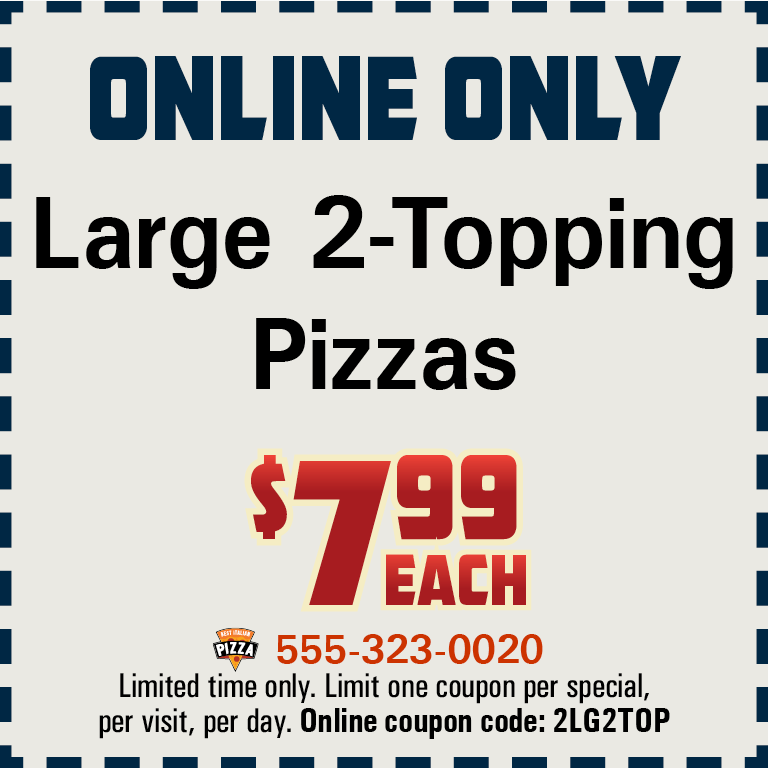
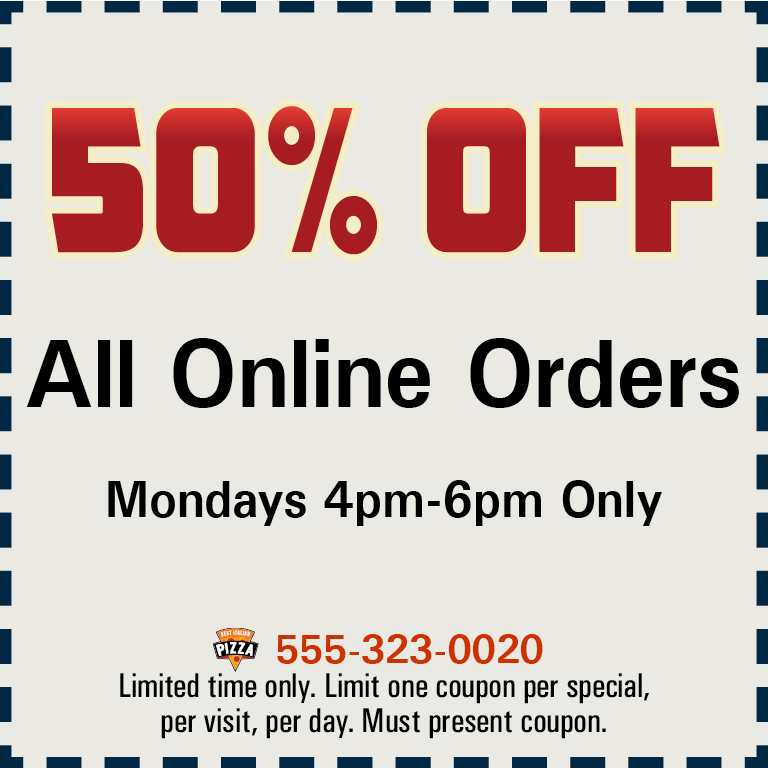
8. Make Your Coupons Legible
Consumers don’t want to squint in order to read your offers. Try to use as little content as possible on your coupons. Just tell them what they absolutely need to know in the largest font possible and avoid disclaimers and excessive fine print. Keeping your offers simple will also eliminate any possible confusion on the reader’s part.
9. Make It a Limited Time Offer
One surefire way to speed up response is to use the phrase “Limited Time Offer” on your coupon. It adds a sense of urgency and will make the recipient more likely to take action since they know they can’t wait around. Studies show that 54% of all diners (and 61% of Millennials) are motivated to try a new restaurant when they receive coupons for new or limited time offers.
This method works better than setting a strict expiration date, since customers can get frustrated if they miss your deadline by a few days. It also eliminates the work of timing your promotion with the distribution dates of your mailers.

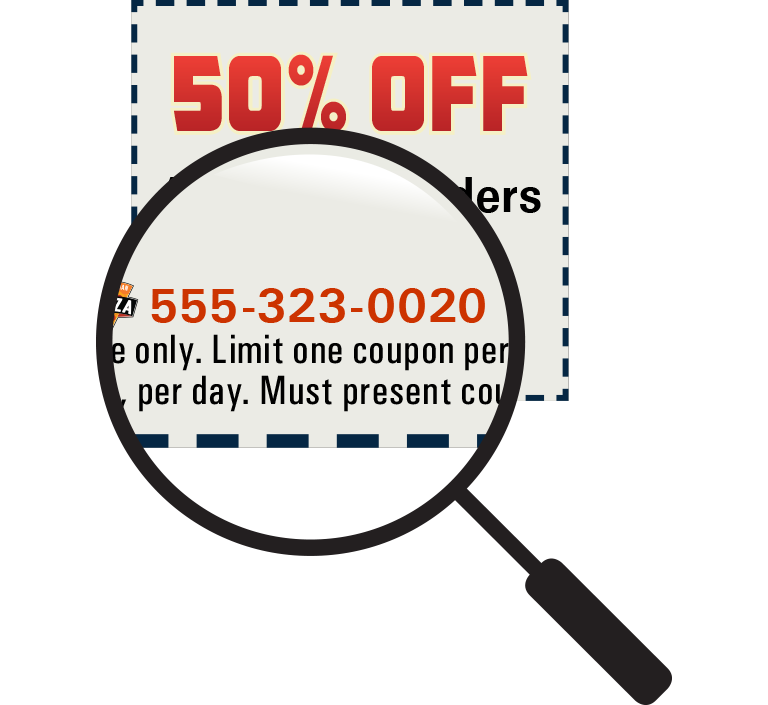
10. Make It Easy to Order
Consumers usually carry coupons with them to use at a later date. Make it as easy as possible for them to order from you by having your contact information readily available. If you’re short on space and can only fit a phone number or your website, you should opt for the phone.
Conclusion
Once you’ve assembled your very best coupons, it’s time to get some feedback on them. Simply ask a few friends, family members, coworkers, or customers to give you their honest opinions. Would they be motivated to place an order? This is a quick and easy way to gauge the strength of your offers.
After sending out your campaign, don’t forget to track, tweak, and test your coupons on a regular basis. Over time, you’ll be able to weed out the offers that generate the lowest response and use your acquired knowledge to create new, stronger offers.